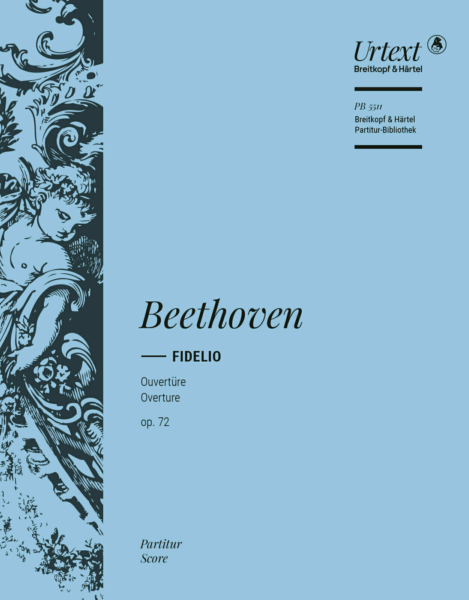Ludwig van Beethoven (1770–1827) Fidelio op. 72
Ouvertüre zur Oper – Urtext herausgegeben von Christian Rudolf Riedel [Orch] Dauer: 7'
2.2.2.2 – 4.2.2.0 – Pk – Str
Für die Fidelio-Ouvertüre, 1814 in Windeseile komponiert, bietet heute eine Partiturabschrift in der Österreichischen Nationalbibliothek eine zuverlässige Grundlage für eine textkritische Neuausgabe.
Nachdem Sie die gewünschten Ausgaben in den Warenkorb gelegt haben, können Sie dort die benötigte Stückzahl bei Bedarf noch anpassen.
Urtext-Neuland: Die Ouvertüre zu Fidelio
Bis heute werden die beiden zentralen Fidelio-Ouvertüren aus Notentexten aufgeführt, die auf die ungenauen und fehlerhaften Stimmenerstdrucke zurückgehen. Inzwischen hat sich die Quellenlage zu beiden Werken durch zahlreiche Quellenfunde signifikant verbessert.
Für die Fidelio-Ouvertüre, 1814 in Windeseile (und dann doch mit leichter Verspätung) für die Wiederaufnahme der Oper komponiert, bietet heute eine Partiturabschrift in der Österreichischen Nationalbibliothek eine zuverlässige Grundlage für eine textkritische Neuausgabe. Dieses Manuskript, in dem sich zahllose Korrekturhinweise und Vervollständigungen Beethovens finden, ist die einzige überlieferte Quelle, die der Komponist selbst überprüft hat.










 Blättern
Blättern